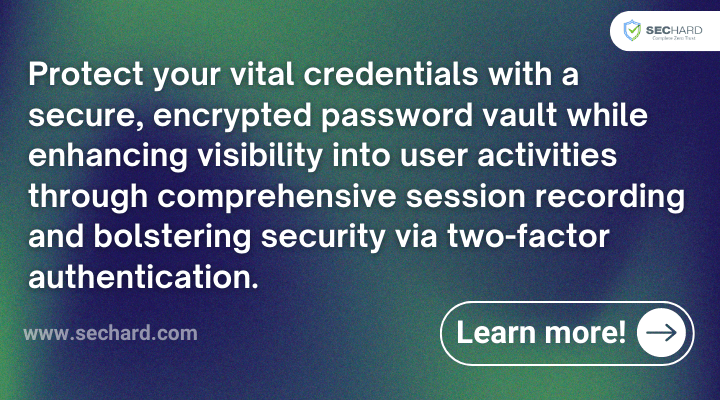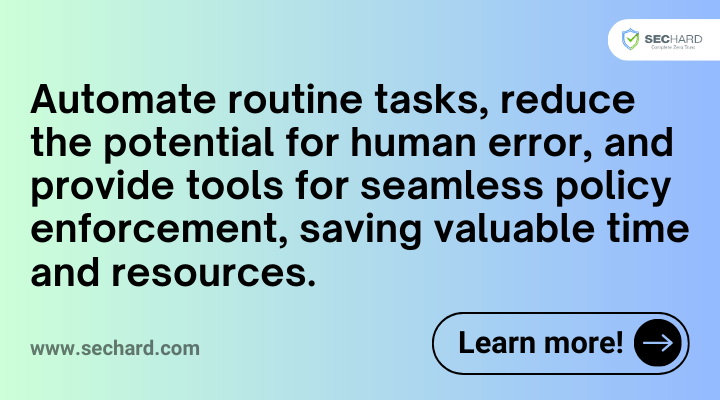As the number of cyber-attacks and data breaches continues to rise, organizations globally are paying more attention than ever to their cybersecurity strategies. One aspect that demands particular attention is Privileged Access Management (PAM), a fundamental element of any robust information security strategy.
What is Privileged Access Management (PAM)?
Privileged Access Management (PAM) refers to the process of providing and regulating access to vital systems, networks, and data within an organization to privileged users. These users can be internal and external, including system administrators, third-party vendors, and applications that need high-level permissions to function correctly.
In essence, PAM involves controlling who gets elevated permissions to critical IT infrastructure and what they can do with those privileges. It also monitors their activities to detect anomalies suggesting a security threat. Given the escalating complexity of IT systems and the growth of remote work practices, effective PAM has become a necessity rather than an option.
When properly implemented, PAM solutions provide several key benefits. They offer a centralized view of privileged access across an organization, reduce the risk of insider threats and external attacks, ensure compliance with regulatory standards, and provide a detailed audit trail of privileged user activities.
PAM solutions work by following the principle of least privilege (PoLP), which asserts that a user should be granted the minimum levels of access necessary to perform their role effectively. This limits the potential damage that could arise from compromised accounts, intentional misuse, or human error.
Embracing Privileged Access Management (PAM)
PAM adoption should not be viewed as an add-on or a patch to your existing cybersecurity measures. Instead, it should be seen as a strategic move, an essential pillar of your overall security architecture. However, deploying a PAM solution is not as simple as flipping a switch. It requires thoughtful planning, meticulous execution, and continuous improvement.
Organizations often make the mistake of perceiving PAM as a one-size-fits-all solution that can instantly plug all security gaps. While PAM is undeniably powerful, its effectiveness hinges on the organization’s understanding of its unique environment, risks, and requirements.
Begin by identifying your organization’s privileged users and understanding the context of their access. This involves mapping out who has access to what, why, when, and how. Understanding this context will help you design a PAM solution that aligns with your needs while adhering to best practices.
It’s crucial to consider the human aspect of PAM implementation. This includes fostering a culture of cybersecurity awareness, training employees about the importance of PAM, and ensuring they understand their roles in maintaining it. Without user buy-in and awareness, even the most sophisticated PAM solutions can fall short of their potential.
As we step further into the digital age, where the proliferation of cloud-based solutions, remote work, and digital transformation initiatives continue to grow, the role of PAM in enhancing an organization’s security posture becomes more critical than ever. It’s time for organizations to embrace PAM as an essential part of their cybersecurity strategy.
Privileged Access Management (PAM) Best Practices
Employ Temporary Privilege Escalation
Security vulnerabilities often arise from granting users excessive access rights. A wise way to reduce these vulnerabilities is to use temporary privilege escalation, where admin rights are granted only when necessary. This strategy allows organizations to avoid unnecessary exposure and effectively manage insider threats, thus lowering the risk of both internal and external attacks.
Keep Track of Assets and Privileges
Visibility into your digital assets and corresponding privileges is key to managing them effectively. Maintaining a clear inventory of your digital assets lets you understand which privileges are redundant, obsolete, or potentially risky. This proactive approach ensures your organization stays on top of its asset management, helping avoid any unforeseen security challenges.
Deploy Attribute-Based Access Control
Attribute-Based Access Control (ABAC) adds another level of security to your organization. It uses a combination of user, device, and environmental attributes to make access decisions. This comprehensive approach enhances your security posture by giving you more control and flexibility in defining who can access what, when, and under what circumstances.
Monitor Assignment of Privileges Versus Usage
The privileges granted to a user or role may not always align with their actual usage. Regularly reviewing the assigned privileges versus actual usage can uncover unused privileges that could pose potential security risks. This active monitoring helps organizations maintain a lean, efficient, and secure access management strategy.
Deploy Zero Trust, Everywhere
The Zero Trust model assumes breach, meaning it doesn’t automatically trust anything inside or outside its perimeters. It verifies every access request as though it originates from an open network. This rigorous strategy enhances security by requiring complete authentication, authorization, and encryption for every request, regardless of origin.
Record and Audit
Record-keeping and regular audits are critical for maintaining a healthy PAM strategy. An audit trail of all privileged activities aids in identifying unusual patterns and supports forensic investigations. Regular audits also ensure your organization complies with regulatory requirements, making it a vital practice in effective PAM.
Monitor and Alert
Implementing real-time monitoring and alerting systems significantly enhances your organization’s ability to detect unusual or potentially harmful activities. Quick detection can prevent potential breaches or minimize their impact, helping maintain your organization’s cybersecurity integrity.
Adopting these best practices for Privileged Access Management can significantly improve an organization’s security posture. A robust PAM strategy protects your critical assets, supports compliance, boosts operational efficiency, and fuels business growth, making it a valuable component of your overall business strategy.
SecHard Privileged Access Manager
SecHard Privileged Access Manager is packed with advanced features engineered to offer unbeatable protection for your organization’s privileged accounts.
From an encrypted password vault that securely stores all your critical credentials and comprehensive session recording capabilities that provide in-depth visibility into user activities to 2FA authentication, ensuring extra layers of security, SecHard Privileged Access Manager is your ultimate defense against cyber threats.
But that’s not all – our solution is more than just a security tool. It’s designed to enhance operational efficiency too. By automating routine tasks, reducing the potential for human error, and providing tools for seamless policy enforcement, SecHard Privileged Access Manager helps your organization save valuable time and resources.
Book a free demo to learn more: https://sechard.com/book-a-demo/ or contact us at [email protected].

